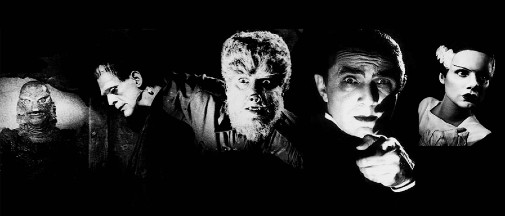
Halloween may be (technically over) but the spooky season continues (if you'd like) via various streaming services. The Criterion Channel programmed a selection of titles from Universals' Horror canon from the 1930s through the 1950s. Universalhelped typify the American horror genre while also creating screen monsters whose iconography prevails. Six creatures stand above the others – Frankenstein's monster, Dracula, the mummy, the invisible man, the wolfman, and the gill man. That sextet is represented in this Criterion Channel collection, so it's an excellent opportunity to delve into those horrific franchises. Consequently, I spent the better part of October watching all the movies in each of those classic monster's series, seeing every feature they starred in from 1931 to 1956. In the end, since everyone loves lists, I decided to rank the creatures…
As honorable mentions, we have the inheritors of the original monsters' legacy who made their parts into cinematic legends despite not taking on the legendary roles. I'm thinking about Elsa Lanchester's stupendous Bride of Frankenstein and Gloria Holden's bewitching Countess Zaleska in Dracula's Daughter. I wish both of them could have become the center of their own franchises instead of being one-movie characters. The Dracula series would have significantly benefitted from such a course correction. Now, a ranking of the classic universal monsters, starting from the bottom.
6) THE WOLFMAN
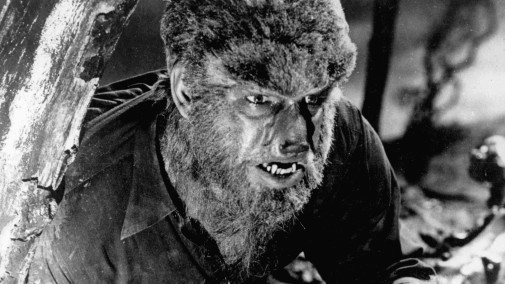
- Portrayed by: Technically, the only actor to play Larry Talbot was Lon Chaney Jr., but Henry Hull played another leading wolfman in 1935.
- Movies: Werewolf of London (1935), The Wolf Man (1941), Frankenstein Meets the Wolf Man (1943), House of Frankenstein (1944), House of Dracula (1945), She-Wolf of London (1946), and Abbott and Costello Meet Frankenstein (1948)
- The Best: The 1941 movie's the best one, though not because of the titular monster.
Despite his name, Lon Chaney Jr. is nothing like Lon Chaney Sr., not in front of the camera. The charisma isn't there, and neither is the acting talent. What's worse, unlike other Universal horror franchises, the Wolf Man series had a pretty constant cast and chronology, which further highlighted its protagonist's lack of development, the repetitive nature of his arc, and the dramatic incompetence of the actor. Chaney's Larry Talbot spends five movies moping around, condemned to forever live knowing he's a killer.
Such tragedy could be compelling, but the teams behind these movies rarely got it right. Instead, the story of Larry Talbot is a bore, caught in endless cycles with the most perfunctory of narrative conclusions. At least the 1941 'original' possesses a supporting cast worth their salt and a dense Gothic atmosphere that's able to make us forget the charisma void at the centert. All that and the makeup effects are pretty nifty, though the best transformation happens in the 1935 flick with its stages obscured by architecture. Still, that's not enough to make the wolfman anything but the worst and most boring of Universal's classic ghouls.
5) THE MUMMY
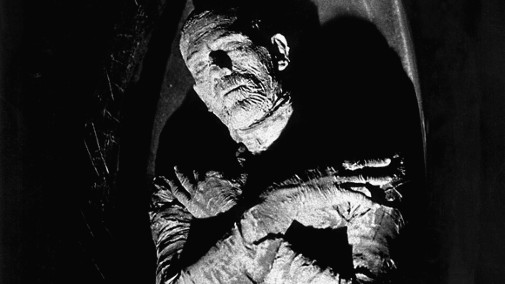
- Portrayed by: Boris Karloff, Tom Tyler, Lon Chaney Jr., and Eddie Parker
- Movies: The Mummy (1932), The Mummy's Hand (1940), The Mummy's Tomb (1942), The Mummy's Ghost (1944), The Mummy's Curse (1944), and Abbott and Costello Meet the Mummy (1955)
- The Best: The original, primarily due to Karloff.
Like Dracula before it, 1932's The Mummy suffers from stagey filming that drains its second half of cinematic verve. However, Boris Karloff's portrayal of the villain is incandescent, finding visceral menace in stillness, translating a cosmic horror entrapped within the concept of an immortal corpse. Furthermore, Karl Freund's film achieves a moment of dread that far outmatches most of the other Universal horror features. In other words, for some erstwhile instants, this horror movie's chilling, if not outright scary.
On the downside, the mummy franchise is full of racism, orientalism, and other scars born out of prejudice. Another curse upon the series is its cheapness. The mummy was victimized by increasingly small budgets and a production philosophy that valued quickness over quality (more than any other monster). Indeed, three different sequels reuse the same footage, and some of those movies are barely an hour long. If the filmmakers couldn't be bothered, why should we?
4) DRACULA
![]()
- Portrayed by: Bela Lugosi, Carlos Villarías, Lon Chaney Jr., and John Carradine
- Movies: Dracula (1931), Drácula (1931), Dracula's Daughter (1936), Son of Dracula (1943), House of Frankenstein (1944), House of Dracula (1945), and Abbott and Costello Meet Frankenstein (1948)
- The Best: The Spanish-language 1931 flick, despite Lugosi's superior performance and the English-speaking film's fame.
I know it's an unpopular opinion, but Tod Browning's Dracula isn't a very good movie beyond its eerie prologue. As soon as the film arrives in London, it becomes a truncated stage play embalmed in uninteresting compositions and a crushing absence of movement. Apart from the first sequences, the only reason to watch the movie is Bela Lugosi's take on the Bram Stoker villain, a manifestation of animalistic lust and a sort of gangrenous charisma. I guess Dwight Frye's Renfield's also worthy of some praise, but that's about it.
Curiously enough, George Melford's parallel production of a Spanish-language version for the Mexican market is superior in almost all ways. The script is much better, for a start, but the movie goes further, solving chronology issues, clarifying its period, and stabbing the material's staginess with a stake through the heart. It even twists the novel's xenophobia by muddying the cultural barriers between Dracula and his victims. Sure, Carlos Villarías is a much inferior Count next to Lugosi, but he's not enough to destroy the project.
After this movie, shot on the same sets as Browning's version, Dracula's Daughter is also plenty of fun, mainly for how weird it is. I'd also recommend House of Dracula, where John Carradine gets to play a Dracula who seeks a cure to his vampirism, an ancient killer tired of his murderous condition. It works better than the wolf man's typical storyline despite following similar beats.
3) THE INVISIBLE MAN
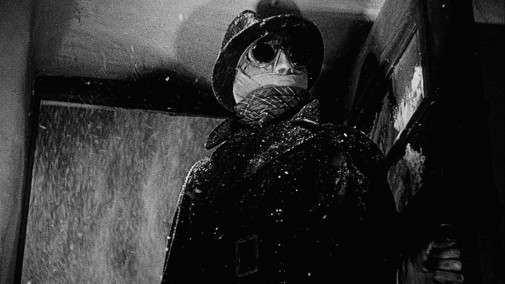
- Portrayed by: Claude Rains was the only one to play Jack Griffin. However, other people took on the titular role of an invisible person. They were Vincent Price, Virginia Bruce, Jon Hall, and Arthur Franz
- Movies: The Invisible Man (1933), The Invisible Man Returns (1940), The Invisible Woman (1940), Invisible Agent (1942), The Invisible Man's Revenge (1944), and Abbott and Costello Meet the Invisible Man (1951)
- The Best: James Whale's original is hard to beat, but the Abbot and Costello comedy is pretty great, too.
No Universal monster was ever as prone to jump out of the horror genre as the invisible man. Indeed, some of the character's movies can't be characterized as horror by the most generous of academics. The Invisible Woman is an outright comedy, while Invisible Agent is a spy thriller with funny bits woven through the war picture nastiness. Such a free approach to brand integrity didn't always result in cohesive movies, but it created a fun saga to watch and analyze. Indeed, most of these are pretty entertaining, though Whale's 1933 movie shines brightest.
As for the invisible people, Rains is the best, creating a complex characterization out of someone driven mad by an unnatural power. In his version, Vincent Price found aching pain, playing that encroaching insanity as a sad fate, while Virginia Bruce and Arthur Franz got the most out of their humorous flicks. The invisible man is never boring to watch, whether mad, a Byronic anti-hero, a funny broad, an incompetent spy, or a bumbling fugitive.
There's also the fact that the invisible man movies always have incredible effects, even the worst ones, and some nifty characterizations shining on the sidelines. Even if you're not into the central concept, The Invisible Woman and Invisible Agent are worthwhile for their supporting casts alone. For example John Barrymore is delightful as a frazzled scientist, while Peter Lorre is a demonic threat.
2) THE GILL MAN
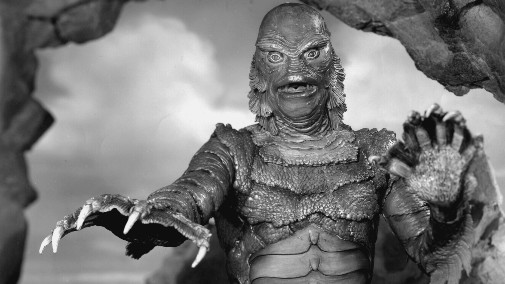
- Portrayed by: Ricou Browning, Ben Chapman, Tom Hennesy, and Don Megowan
- Movies: Creature from the Black Lagoon (1954), Revenge of the Creature (1955), and The Creature Walks Among Us (1956)
- The Best: The original, especially its underwater sequences.
Unlike all the other creatures in this list, the gill man was an original big-screen creation with no ties to previous literary or theatrical tradition. That makes its creation even more remarkable, both from a textual and design standpoint. While the monster features characteristics intrinsic to mythology for centuries, the hybridization of a "beauty and the beast" story model with a horror bent still feels fresh. Furthermore, there's a sensuality to the first movie that transcends the aquatic humanoid's libido.
It's a horny picture, bubbling at the edge with desires rarefied in beautiful underwater footage, ballets where touch rarely comes, but the tension is suffocating. While the first sequel eliminated such elements (it's virtually a feature-length water park commercial), the last movie returned to some of those ideas with significant effect. In The Creature Walks Among Us, a search for midcentury American normalcy rubs against something primordially untamable—fascinating stuff for a franchise that could have easily been a hack job.
And then, there's the design, a masterpiece of weird musculature fused to amphibian features. The face feels inexpressive, and yet we can read so much into it. Former Disney animator Millicent Patrick and Universal makeup artist Bud Westmore were the movie magicians behind such wizardry. Unfortunately, Patrick's name was systematically erased from the movie's legacy by a colleague unwilling to share credit with a woman.
1) FRANKENSTEIN'S MONSTER
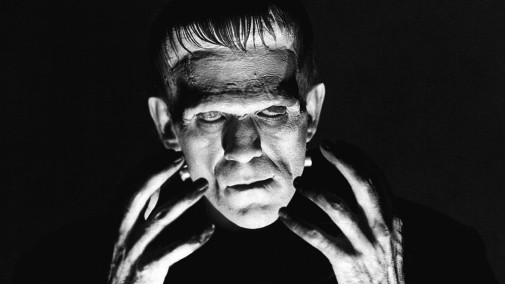
- Portrayed by: Boris Karloff, Lon Chaney Jr., Bela Lugosi, and Glenn Strange
- Movies: Frankenstein (1931), The Bride of Frankenstein (1935), Son of Frankenstein (1939), The Ghost of Frankenstein (1942), Frankenstein Meets the Wolf Man (1943), House of Frankenstein (1944), House of Dracula (1945), and Abbott and Costello Meet Frankenstein (1948)
- The Best: the original's great, but The Bride of Frankenstein's even better. Indeed, Whale's sequel is a camp classic for the ages.
It's an obvious choice to top the list, but also the correct one. Frankenstein started the Universal Horror craze and helped solidify a genre's aesthetic by bringing German Expressionism to the Hollywood studios. What's more it created such an immortal iconography that the adaptation has superseded its source material in the collective imagination.
The reasons for these movies' greatness are varied. Still, they mostly come down to Whale's vision and Boris Karloff's performance as the scientist's unholy creation, a marvel of stumbling humanity learning what it is to be human or, indeed, to be alive. And yet, the sequel is better than the first movie, deepening Karloff's tragic monster and finding new tonal possibilities. It dives into a pool of camp while still emanating conceptual disquiet, culminating in the birth of Elsa Lanchester's bride, a shrieking abomination whose eyes shine with terror at her very existence.
The other sequels are much worse, but they don't retroactively worsen their predecessors. Even as Universal was shortchanging its other horror franchises, more care was always put into the Frankenstein movies. Abbott and Costello Meet Frankenstein proves that the character was flexible enough for comedy without losing its essence or dignity – a feat that Lugosi's Dracula was unable to perform so seamlessly. So, if you want to start watching Universal Horror, begin with the Frankenstein movies, for they are the cream of the crop, and the character of Frankenstein's monster is the greatest ghoul of them all.
How would you rank these Universal Monsters?